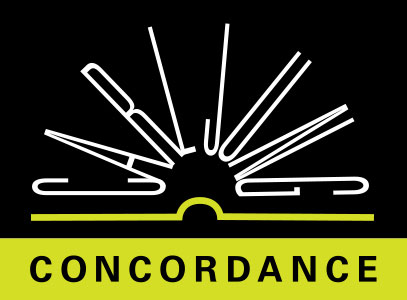If we apply the same method to the modern mandalas that people have seen in dreams or visions, or have developed through “active imagination,” we reach the conclusion that mandalas are expressions of a certain attitude which we cannot help calling “religious”:
RELIGION AS A RELATIONSHIP
TO THE HIGHEST VALUE
Religion is a relationship to the highest or most powerful value, be it positive or negative. The relationship is voluntary as well as involuntary, that is to say you can accept, consciously, the value by which you are possessed unconsciously. That psychological fact which wields the greatest power in your system functions as a god, since it is always the overwhelming psychic factor that is called “God.” As soon as a god ceases to be an overwhelming factor he dwindles to a mere name. His essence is dead and his power is gone. Why did the gods of antiquity lose their prestige and their effect on the human soul? Because the Olympians had served their time and a new mystery began: God became man
CW11 ¶ 137DRAW CONCLUSIONS FROM
MODERN MANDALAS
If we allow ourselves to draw conclusions from modern mandalas we should ask people, first, whether they worship stars, suns, flowers, and snakes. They will deny this, and at the same time they will assert that the globes, stars, crosses, and the like are symbols for a center in themselves. And if asked what they mean by this center, they will begin to stammer and to refer to this or that experience which may turn out to be something very similar to the confession of my patient, who found that the vision of his world clock had left him with a wonderful feeling of perfect harmony
CW11 ¶ 138Others will confess that a similar vision came to them in a moment of extreme pain or profound despair. To others again it is the memory of a sublime dream or of a moment when long and fruitless struggles came to an end and a reign of peace began
CW11 ¶ 138If you sum up what people tell you about their experiences, you can formulate it this way: They came to themselves, they could accept themselves, they were able to become reconciled to themselves, and thus were reconciled to adverse circumstances and events. This is almost like what used to be expressed by saying: He has made his peace with God, he has sacrificed his own will, he has submitted himself to the will of God
CW11 ¶ 138MODERN MANDALA AS AN INVOLUNTARY
CONFESSION OF A MENTAL CONDITION
A modern mandala is an involuntary confession of a peculiar mental condition. There is no deity in the mandala, nor is there any submission or reconciliation to a deity. The place of the deity seems to be taken by the wholeness of man
CW11 ¶ 139PEOPLE WHO CANNOT PROJECT
THE DIVINE IMAGE ANY LONGER
The experience formulated by the modern mandala is typical of people who cannot project the divine image any longer. Owing to the withdrawal and introjection of the image they are in danger of inflation and dissociation of the personality. The round or square enclosures built round the center therefore have the purpose of protective walls or of a vas hermeticum to prevent an outburst or a disintegration. Thus the mandala denotes and assists exclusive concentration on the center, the Self. This is anything but egocentricity. On the contrary, it is a much needed self-control for the purpose of avoiding inflation and dissociation
CW11 ¶ 156GREEK TEMENOS AS
ISOLATED SACRED PLACE
The enclosure, as we have seen, has also the meaning of what is called in Greek a temenos, the precincts of a temple or any isolated sacred place. The circle in this case protects or isolates an inner content or process that should not get mixed up with things outside. Thus the mandala repeats in symbolic form archaic ways and means which were once concrete realities
CW11 ¶ 157As I have already mentioned, the inhabitant of the temenos was a god. But the prisoner, or the well-protected dweller in the mandala, does not seem to be a god, since the symbols usedstars, crosses, globes, etc.do not signify a god but an obviously important part of the human personality. One might almost say that man himself, or his innermost soul, is the prisoner or the protected inhabitant of the mandala. Since modern mandalas are amazingly close parallels to the ancient magical circles, which usually have a deity in the center, it is clear that in the modern mandala manthe deep ground, as it were, of the Selfis not a substitute but a symbol for the deity
CW11 ¶ 157IDEA OF A DEIFIED OR DIVINE MAN
It is a remarkable fact that this symbol [the Self] is a natural and spontaneous occurrence and that it is always an essentially unconscious product, as our dream shows. If we want to know what happens when the idea of God is no longer projected as an autonomous entity, this is the answer of the unconscious psyche. The unconscious produces the idea of a deified or divine man who is imprisoned, concealed, protected, usually depersonalized, and represented by an abstract symbol
CW11 ¶ 158MEDIEVAL CONCEPTION OF THE MICROCOSM
The symbols often contain allusions to the medieval conception of the microcosm, as was the case with my patient's world clock, for instance. Many of the processes that lead to the mandala, and the mandala itself, seem to be direct confirmations of medieval speculation. It looks as if the patients had read those old treatises on the philosophers' Stone, the divine water, the rotundum, the squaring of the circle, the four colours, etc. And yet they have never been anywhere near alchemical philosophy and its abstruse symbolism
CW11 ¶ 158